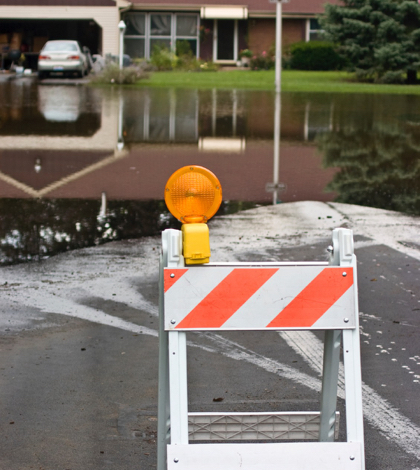Following Governor Jerry Brown issuing two emergency proclamations late Monday and the cessation of the most recent rains, the state has begun its recovery from the severe winter storms. The governor’s declarations will aid in securing funding to help communities respond to and recover from the storm’s destruction.
The emergency proclamations issued due to January and December storms direct Caltrans to formally request immediate assistance through the Federal Highway Administration’s Emergency Relief Program. The proclamations also direct the Office of Emergency Services to provide assistance to local governments.
A state of emergency was also declared by Gov. Brown for more than 50 of the state’s 58 counties including Alameda, Alpine, Butte, Calaveras, Contra Costa, Del Norte, El Dorado, Fresno, Humboldt, Inyo, Kern, Kings, Lake, Lassen, Los Angeles, Madera, Marin, Mendocino, Merced, Modoc, Monterey, Napa, Nevada, Orange, Placer, Plumas, Sacramento, San Benito, San Bernardino, San Diego, San Francisco, San Luis Obispo, San Mateo, Santa Barbara, Santa Clara, Santa Cruz, Shasta, Sierra, Siskiyou, Solano, Sonoma, Stanislaus, Sutter, Tehama, Trinity, Tulare, Tuolumne, Ventura, Yolo and Yuba counties.
Due to extreme drought conditions from more than five-plus-years of minimal rain throughout the state, the most recent storms caused dangerous flash flooding, erosion, and substantial mud and debris flows. Conversely, they brought much-needed precipitation throughout the state.
Estimates of conditions for the state’s major reservoirs paint a far different picture as opposed to this time last year: Shasta Reservoir is posting 123 percent of its historical average for this date or 81 percent to total capacity; likewise, Oroville’s reservoir is at 126 percent of its historical average for this date which is also 81 percent of its total capacity. Other reservoirs within the state that have surpassed their historical averages for this date include: Don Pedro Reservoir, 133 percent or 91 percent of total capacity; Lake McClure Reservoir, 156 percent or 73 percent of total capacity; Pine Flat Reservoir,131 percent or 60 percent of total capacity; Millerton Lake Reservoir, 117 percent or 72 percent of total capacity; and, San Luis Reservoir at 103 percent or 79 percent of total capacity.
But the storms that pummeled the state over the weekend are to blame for at least five deaths statewide. The California coast was battered throughout the weekend with waves as high as 30 feet in some areas. The National Weather Service has reported that San Francisco saw its sixth-wettest January in the 168 years that data has been collected.
Damage from the January storms has been extensive. Santa Cruz County has sustained some $15 million in damages according to the county’s assistant public works director. Landslides, downed trees and closed streets are to be found throughout the county. Road closures necessitated a 10-mile detour for one elementary school bus route and erosion on another road was predicted to close the street impacting deliveries in the area including such vital services as mail and FedEx deliveries and even Meal on Wheels delivering food to house-bound seniors.
Further north in Marin County, County Administrator Matthew Hymel indicated substantial damage. “Most significantly, we estimate around $2 million worth of road damage,” Hymel said, “as well as all the resources we spent on staff responding to the storm.”
The East Bay Municipal Utility District in Oakland has indicated it will be spending upwards of $500,000 to stabilize an embankment adjacent to the San Pablo Creek where the underground Briones Aqueduct is located. Some 2,900 tons of quarter-ton rocks have been placement on the embankment to stop a landslide from further damaging the aqueduct.
Southern California has not escape Mother Nature’s wrath either. At least 1,300 customers in San Bernardino mountain communities were without power according to SoCal Edison. Although power was restored quickly for some customers, others in inaccessible areas weren’t so lucky because of the intensity of the storms.
Residents in recent burn areas were issued evacuation orders in the Los Angeles County cities of Glendora and Duarte as well as Silverado Canyon in Orange County. Rockslides closed roads in Malibu and other coastal mountain areas and a homeless encampment off Pacific Coast Highway in a Harbor City neighborhood was submerged in several feet of water.
As California dries out from its most recent rains meteorologists are urging residents to enjoy the sun but be realistic. Though the remainder of January is predicted to be dry throughout most of the state more rain is forecast for early February.
 California Water News Daily Your Source For Water News in California
California Water News Daily Your Source For Water News in California


